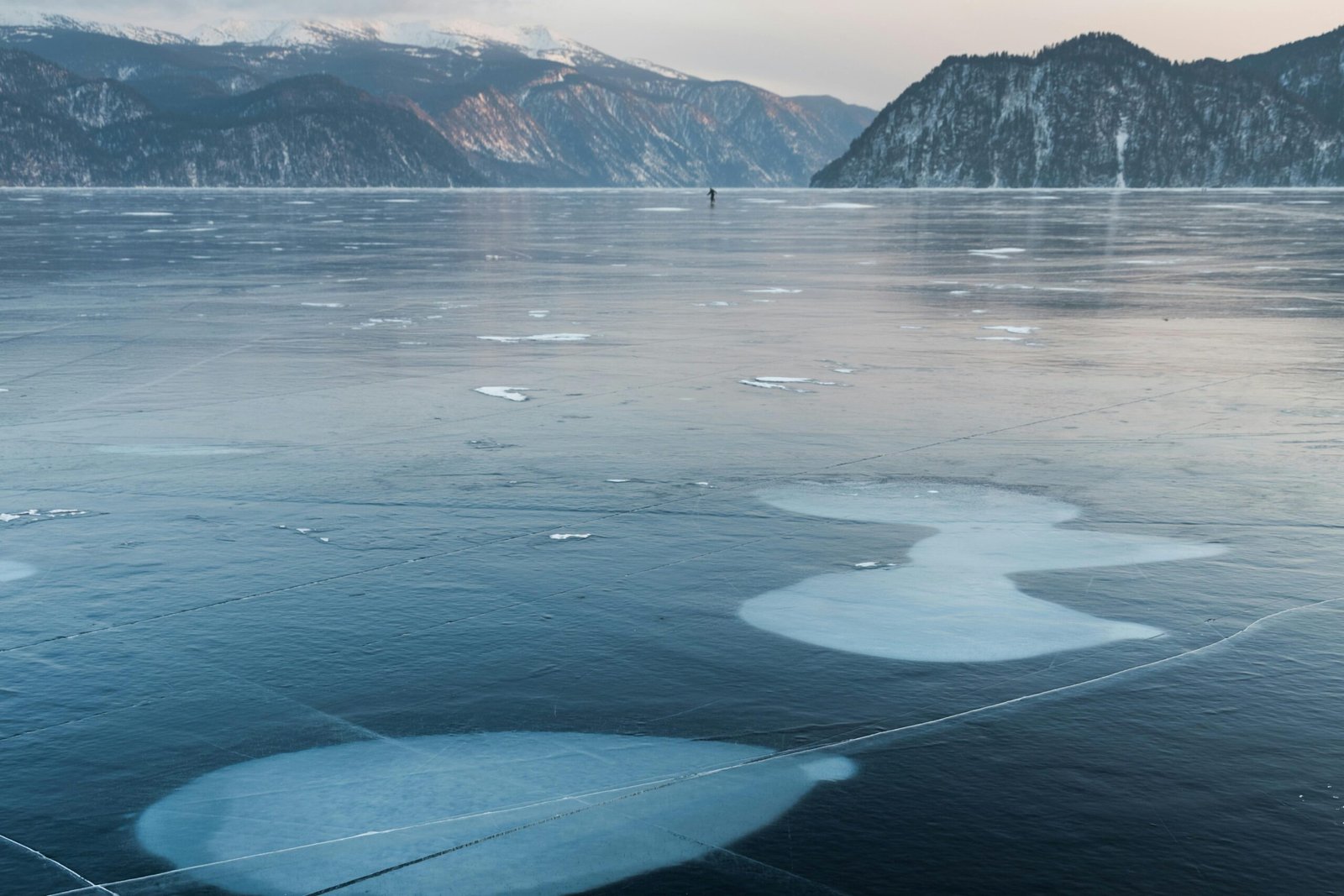The Alarming Discovery in Ancient Ice Cores

Scientists analyzing ice cores from Antarctica and Greenland have uncovered disturbing evidence of past climate shifts. These frozen time capsules hold records of ancient temperatures and atmospheric compositions, revealing that Earth’s climate has undergone abrupt changes in the past. Some of these shifts occurred in mere decades, disrupting ecosystems and civilizations alike.
The latest findings suggest that our current warming trends mirror patterns that preceded past climate upheavals. If history repeats itself, we may be on the verge of a sudden climate shift that could alter weather patterns, ocean currents, and global ecosystems at an unprecedented rate. This raises urgent concerns about how prepared humanity is for such rapid transformations.
Melting Ice and Rising Sea Levels
Glaciers and polar ice caps are melting at an accelerating pace, contributing to rising sea levels worldwide. Satellite data has shown that ice sheets in Antarctica and Greenland are shedding ice at rates far exceeding previous projections. This loss of ice not only threatens coastal communities but also disrupts ocean circulation, which regulates global temperatures.
If these trends continue, major cities could face severe flooding, displacing millions of people and causing economic turmoil. Additionally, the influx of freshwater into the oceans could disrupt the Atlantic Meridional Overturning Circulation (AMOC), a key component of Earth’s climate system, potentially triggering a domino effect of extreme weather events.
The Risk of a Sudden Climate Tipping Point
One of the most concerning aspects of the ice core data is the evidence of past climate tipping points—thresholds beyond which rapid and irreversible environmental changes occur. These tipping points include the collapse of major ice sheets, shifts in monsoon patterns, and die-offs of critical ecosystems like the Amazon rainforest.
Crossing such a threshold would mean that no amount of carbon reduction could reverse the damage, making adaptation the only option. Scientists warn that we may be closer to these tipping points than previously thought, emphasizing the urgent need for global action to mitigate climate change before it spirals beyond control.
Methane: The Hidden Climate Threat Beneath the Ice

Beneath ancient ice sheets lies a ticking time bomb—methane deposits trapped in permafrost and oceanic methane hydrates. As ice melts, these deposits risk being released into the atmosphere, dramatically increasing greenhouse gas concentrations. Methane is far more potent than carbon dioxide in trapping heat, meaning its sudden release could accelerate warming exponentially. (source)
The release of methane from melting ice has been observed in Siberia and the Arctic Ocean, where craters caused by escaping gas have appeared in the tundra. If this feedback loop continues unchecked, it could lead to a runaway greenhouse effect, making it even harder to stabilize global temperatures.
Ocean Currents on the Brink of Collapse
Ice core studies have shed light on the role of ocean currents in regulating Earth’s climate. The AMOC, which helps transport heat across the Atlantic, has been weakening due to the influx of freshwater from melting ice. Past ice core data shows that similar disruptions led to drastic climate shifts, including mini ice ages and prolonged droughts.
A collapse of the AMOC would have catastrophic consequences, from intensifying storms and heatwaves in some regions to plunging others into extreme cold. The unpredictability of such shifts makes it difficult for governments to plan effective responses, highlighting the need for immediate and decisive climate policies.
Melting Ice Sheets Could Trigger Severe Weather Changes
The rapid melting of ice sheets in Antarctica and Greenland poses a serious risk of altering global weather patterns. Scientists warn that freshwater pouring into the oceans could disrupt ocean currents that regulate temperatures across continents. A slowdown in the Atlantic Meridional Overturning Circulation (AMOC), which helps distribute heat, has already been observed. If this trend continues, Europe could face harsher winters, while tropical regions may experience more intense storms and droughts.
A study published in Nature highlights that past climate shifts linked to ice melt have triggered abrupt weather disruptions. The research suggests that warming temperatures could intensify monsoon seasons in Asia and Africa, leading to flooding in some areas and water shortages in others. With ice sheets melting faster than predicted, experts fear that extreme weather events will escalate, bringing devastating consequences to communities worldwide.
Thawing Permafrost Could Release Ancient Viruses and Greenhouse Gases
Permafrost, the frozen layer of soil found in Arctic regions, is thawing at an alarming rate, potentially releasing ancient microbes and massive amounts of carbon into the atmosphere. Scientists have already discovered viruses locked in ice for tens of thousands of years, and some have been successfully revived in laboratory conditions. If pathogens from prehistoric times resurface, they could pose new threats to human and animal health.
Beyond viral concerns, permafrost contains an estimated 1,500 billion tons of carbon, nearly twice the amount currently in Earth’s atmosphere. As the ice thaws, carbon dioxide and methane—potent greenhouse gases—are released, further accelerating global warming. The warming cycle creates a dangerous feedback loop, where rising temperatures lead to more thawing, amplifying climate change at an unpredictable pace.
Shrinking Glaciers Could Disrupt Freshwater Supplies for Millions
Mountain glaciers serve as natural water reservoirs for millions of people, slowly releasing freshwater into rivers that supply drinking water, agriculture, and hydropower. However, glaciers in the Himalayas, Andes, and Rockies are melting at an unprecedented rate, threatening water security in many regions. Some rivers, such as the Indus and Ganges, rely heavily on glacial melt, and their shrinking ice reserves could lead to seasonal water shortages.
A report by the International Centre for Integrated Mountain Development warns that by the end of the century, over 80% of glaciers in the Hindu Kush Himalayas could disappear if global temperatures continue rising. This decline would not only impact drinking water but also disrupt agriculture and energy production. For countries dependent on glacial runoff, the loss of these ice reserves could trigger economic instability and humanitarian crises.
The Impact on Global Agriculture and Food Security
Changes in climate patterns due to ice melt and rising temperatures are expected to have serious implications for global agriculture. Shifting weather patterns, including unpredictable rainfall and more frequent droughts, will affect crop yields in regions that are already vulnerable. This could lead to food shortages, higher prices, and increased global hunger.
Farmers will face mounting challenges as they try to adapt to these new conditions, potentially leading to widespread displacement and migration. Experts warn that countries with weaker agricultural infrastructures may struggle to cope, while the world’s wealthiest nations might not be immune to food insecurity either.
Ocean Acidification: A Threat to Marine Ecosystems

As the planet warms, the oceans are absorbing more carbon dioxide, leading to a process known as ocean acidification. This disrupts marine ecosystems, especially coral reefs and shellfish populations. Acidification weakens shells and skeletons, making it more difficult for organisms to survive. The destruction of coral reefs, which act as vital habitats for countless marine species, will have ripple effects throughout the food chain.
Ocean acidification also poses a threat to global fisheries, which millions of people rely on for food and income. The collapse of marine ecosystems could create economic instability, particularly in coastal regions where fishing is a primary industry.
The Role of Ice Core Data in Climate Models
Ice core samples have provided invaluable data about Earth’s climate history, offering a window into the past that is crucial for understanding current changes. By studying air bubbles trapped in ice layers, scientists can reconstruct historical atmospheric conditions, revealing patterns of temperature fluctuations, greenhouse gas levels, and volcanic activity over tens of thousands of years.
This data helps improve climate models that predict future climate scenarios. By comparing past events to present-day data, scientists can refine their predictions about how quickly the Earth’s climate may change and identify potential tipping points. This information is crucial for preparing mitigation strategies and policy responses to climate change.
